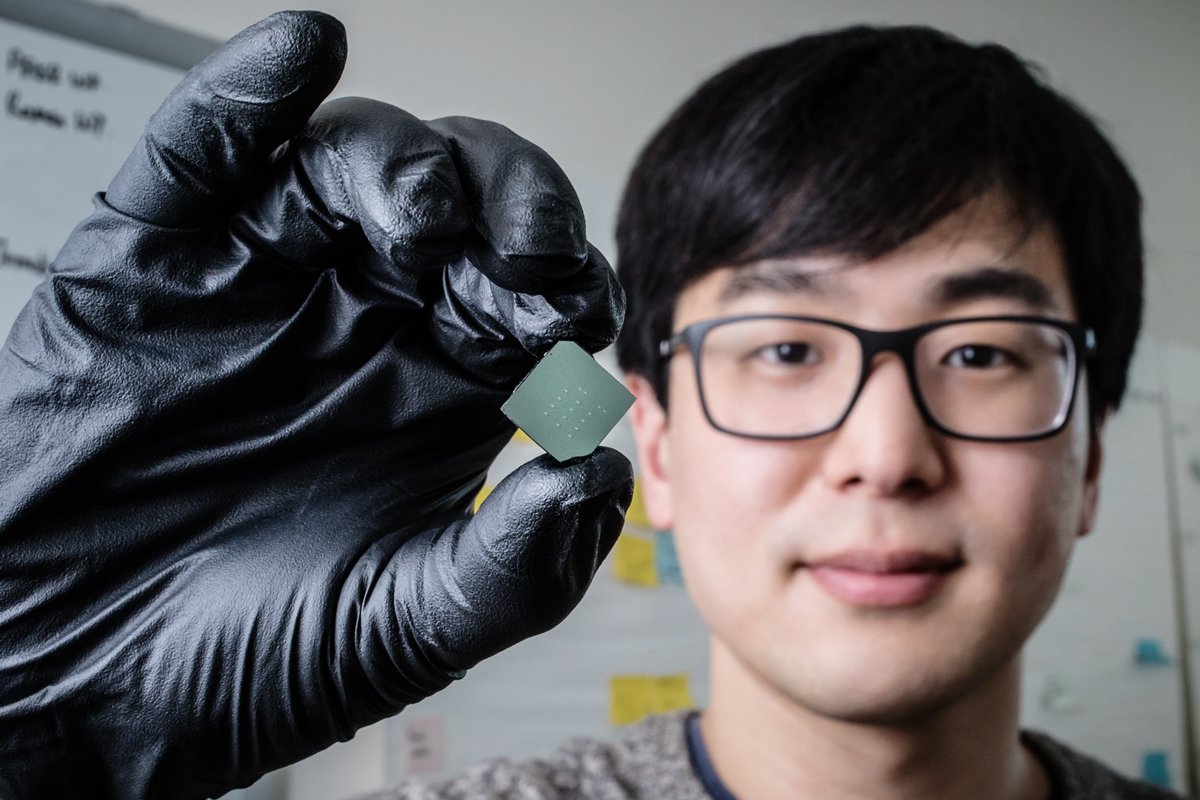University of Illinois researchers have demonstrated that sound waves can be used to produce ultraminiature optical diodes that are tiny enough to fit onto a computer chip. These devices, called optical isolators, may help solve major data capacity and system size challenges for photonic integrated circuits, the light-based equivalent of electronic circuits, which are used for computing and communications.
Isolators are nonreciprocal or “one-way” devices similar to electronic diodes. They protect laser sources from back reflections and are necessary for routing light signals around optical networks. Today, the dominant technology for producing such nonreciprocal devices requires materials that change their optical properties in response to magnetic fields, the researchers say.
“There are several problems with using magnetically responsive materials to achieve the one-way flow of light in a photonic chip,” says mechanical science and engineering professor and co-author of the study Gaurav Bahl. “First, industry simply does not have good capability to place compact magnets on a chip. But more importantly, the necessary materials are not yet available in photonics foundries. That is why industry desperately needs a better approach that uses only conventional materials and avoids magnetic fields altogether.”
In a study published in the journal Nature Photonics, the researchers explain how they use the minuscule coupling between light and sound to provide a unique solution that enables nonreciprocal devices with nearly any photonic material.
However, the physical size of the device and the availability of materials are not the only problems with the current state of the art, the researchers say.
“Laboratory attempts at producing compact magnetic optical isolators have always been plagued by large optical loss,” says graduate student and lead author Benjamin Sohn. “The photonics industry cannot afford this material-related loss and also needs a solution that provides enough bandwidth to be comparable to the traditional magnetic technique. Until now, there has been no magnetless approach that is competitive.”

University of Illinois mechanical science and engineering student and lead author of a new study Benjamin Sohn holds a device that uses sound waves to produce optical diodes tiny enough to fit onto a computer chip. Image: L. Brian Stauffer
The new device is only 200 by 100 microns in size — about 10,000 times smaller than a centimeter squared — and made of aluminum nitride, a transparent material that transmits light and is compatible with photonics foundries. “Sound waves are produced in a way similar to a piezoelectric speaker, using tiny electrodes written directly onto the aluminum nitride with an electron beam. It is these sound waves that compel light within the device to travel only in one direction. This is the first time that a magnetless isolator has surpassed gigahertz bandwidth,” Sohn says.
The researchers are looking for ways to increase bandwidth or data capacity of these isolators and are confident that they can overcome this hurdle. Once perfected, they envision transformative applications in photonic communication systems, gyroscopes, GPS systems, atomic timekeeping, and data centers.
“Data centers handle enormous amounts of internet data traffic and consume large amounts of power for networking and for keeping the servers cool,” Bahl says. “Light-based communication is desirable because it produces much less heat, meaning that much less energy can be spent on server cooling while transmitting a lot more data per second.”
Aside from the technological potential, the researchers can’t help but be mesmerized by the fundamental science behind this advancement.
“In everyday life, we don’t see the interactions of light with sound,” Bahl says. “Light can pass through a transparent pane of glass without doing anything strange. Our field of research has found that light and sound do, in fact, interact in a very subtle way. If you apply the right engineering principles, you can shake a transparent material in just the right way to enhance these effects and solve this major scientific challenge. It seems almost magical.”
The United States Defense Advanced Research Projects Agency and the Air Force Research Laboratory supported this research.
Source: University of Illinois




